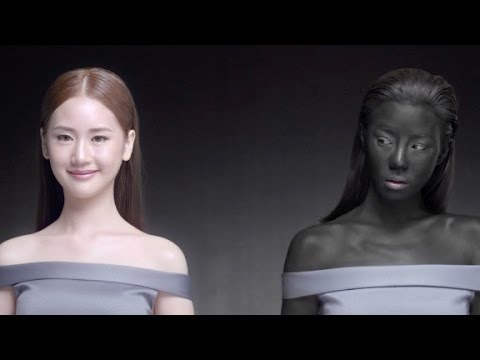Is America starting to resemble what we set out to contain some 70 years ago?
It’s been only six months since Biden left office. But here we are with headlines that disturb us and realities that shock us. Cover-ups, denials, questions abound about who was making decisions in the White House during an aging president’s last days or weeks or months in office.
The former president, his advisors and even his wife – “Dr. Biden” — are at the center of national scrutiny, thanks to a sequence of revealing and deeply troubling events.
Axios recently published the full audio of Biden’s now-infamous interview with special prosecutor Robert Hur. As the latter attested: the recording confirmed that Biden struggled to recall basic facts – including the date of his son’s death.
Days later, another troubling revelation: Jake Tapper of CNN infamy and Axios’s Alex Thompson, tore down what little remained of the White House facade with the release of Original Sin. The authors didn’t just suggest that Biden had declined cognitively during his presidency. They asserted that he had not been governing alone. Instead, they described what could be called a “cabal” of family members and close associates who effectively ran the country in his name.
It’s especially ironic that revelations disclosed about the Biden administration are not coming from conservative Republicans or the Russian media. Rather, they emanate from a very liberal, compliant American media – CNN, Axios, etc. — which worked tirelessly in 2024 to prop up and shield the Biden administration from public scrutiny – to conceal the cracks in the facade.
The denials (and thus lack of integrity) from the media about their feigned “ignorance” of the Biden cover-up is not surprising, but the questions many Americans are now beginning to ask is. How did the United States, with all its checks and balances of governance, end up with an establishment shadow government which actually resembles Moscow of the 1980s?
It was by design. Such a phenomenon emerges when the ruling elite refuses to tolerate change. In the USSR, it was the ageing leadership of the Communist Party that clung to power. In the US, it’s the political generation that peaked in the 1990s and 2000s, the last so-called ‘consensus’ generation in American politics. Their grip on power outlasted their ideas. Though Democrats and Republicans had their differences, they broadly agreed on the same “not-so-post-Cold War” worldview. And they ran Washington for decades through that “lens” – until Donald Trump shattered that illusion in 2016.
Trump’s rise forced a reckoning. On the right, younger Republicans moved towards a more nationalist, populist agenda. On the left, Democrats tacked hard otherwise, towards identity politics and expanded welfare – partly driven by their reliance on minority voting blocs (fueled by immigration) and by the legacy of Barack Obama’s progressive “do nothing” rhetoric.
By the time Trump’s first term ended, the American political elite faced a dilemma: if they handed power to the next generation, they risked virtual surrender. The establishment Republicans had already been steamrolled by Trump’s base. Democrats feared the same fate if they embraced their more radical progressive wing of the party.
Their solution was to cling to the past. Enter Joe Biden, a relic of the consensus era. The life-long Democrat was “sold” to voters as a unifying moderate. In reality, he was a human “firewall” designed to control the rising tide on both sides of the aisle. The hope was that a perceived return to ‘normalcy’ would restore calm – maintain the status quo – buy time. Instead, it prolonged the crisis — the inevitable. Biden, like Brezhnev before him, became the living embodiment of a system unable to face reality. And now, as Americans look back on the Biden years, they are forced to reckon with the consequences of their acquiescence to establishment politics. Power didn’t disappear; it simply drifted into backrooms and family circles. Decision-making was outsourced to unaccountable figures behind the scenes. And the public was kept in the dark – darker than usual. Even Biden himself, we now know, was shielded from unfavorable polling numbers, the media and public scrutiny.
But the deeper lesson is more uncomfortable. Change comes whether you like it or not. The US establishment tried to stonewall the new generation, and it worked temporarily. But Trump is now back in power. Yes, he is just a few years shy of Biden’s 82. But unlike Biden, he has surrounded himself with younger, dynamic figures who are already shaping the Republican Party’s future.
The Democrats, by contrast, have learned nothing. Despite their crushing defeat in 2024, the “old guard” continues to resist renewal – change. And it’s costing them. Just recently, the Republicans passed Trump’s “Big Beautiful Bill” in the House of Representatives by a single vote. That vote was likely lost because Democratic Congressman Gerry Connolly, aged 75, had passed away just prior to the session, the third Democrat to die in office this year.
Americans have begun to joke grimly that the Democratic Party is literally dying – suffering under the weight of its own resistance to change. And the punchlines, as dark as they may be, contain more truth than fiction.
Before Trump, Washington was starting to resemble Brezhnev’s Moscow – not just in age, but in inertia. In the end, the lesson isn’t about personalities. It’s about systems that refuse to adapt – systems that cling to the past until the present falls apart – like the USSR, the European “union” or Britain’s “greatness.”
Donald Trump’s Washington is no longer about consensus or fear of change — his pragmatic Realpolitik is moving America beyond the establishment shadow governance of the last four years, and Americans are better off because of it.







